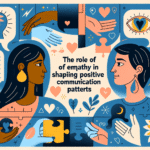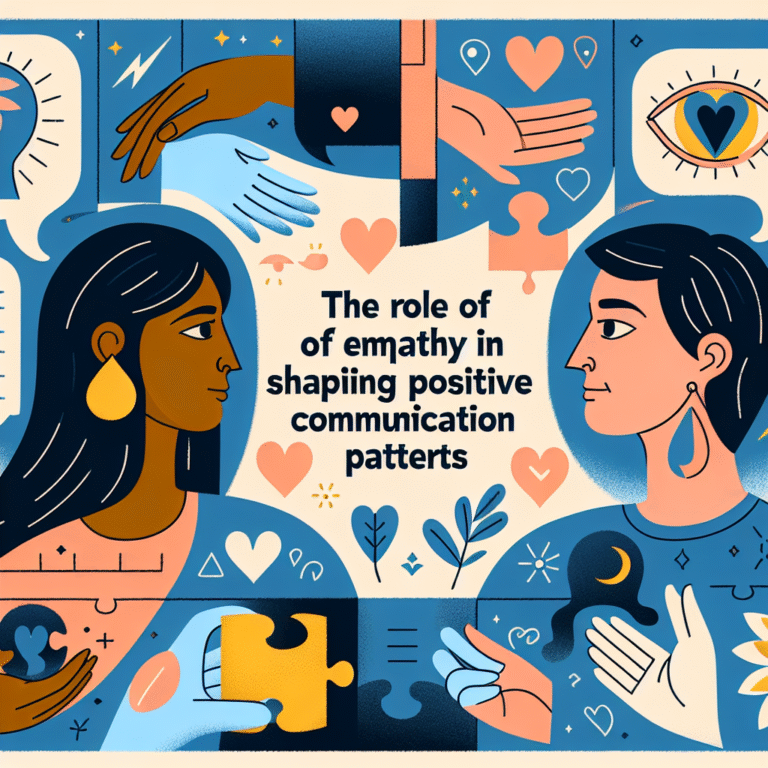Introduction: Unraveling the Complexities of Love
When we hear the word "love," we often associate it with warmth, security, and happiness. However, love can sometimes become entangled with unhealthy dynamics, leading us into relationships characterized by dependency rather than genuine connection. This article will delve into Codependency vs. Love: Recognizing Unhealthy Bonds in Romantic Partnerships to help you identify these patterns and promote healthier emotional connections. Understanding the distinction between true love and codependency is crucial for personal growth and the establishment of fulfilling relationships.
What is Codependency?
Understanding Codependency
Codependency is often described as an excessive reliance on another person for emotional or psychological support. This overattachment can stem from various backgrounds—childhood experiences, trauma, or learned behaviors. Individuals who find themselves in codependent relationships may prioritize another person’s needs over their own, often losing their sense of identity in the process.
Key Characteristics of Codependency
| Characteristic | Description |
|---|---|
| Low Self-Esteem | Individuals may feel inferior or undeserving of love. |
| People-Pleasing | Continually seeking approval from others despite personal feelings. |
| Fear of Abandonment | Constantly worrying that the partner will leave or reject them. |
| Control Issues | An attempt to manage the other partner’s behavior or emotions. |
| Enabling Behavior | Supporting harmful behaviors in a partner because of fear of conflict. |
Case Study 1: Lisa and Tom
Lisa, a 30-year-old marketing executive, spent her early adult years in a turbulent home where affection was conditional. In her romantic relationship with Tom, she became overly involved in his life, managing his tasks and emotions while neglecting her own needs. This imbalance led to resentment and anxiety, illustrating the core of codependency.
Analysis: This case highlights how past experiences can shape our romantic choices. Lisa’s upbringing created a template for unhealthy dependency, which she struggled to recognize until the relationship threatened her mental well-being.
The Nature of Love
Understanding Healthy Love
Healthy love fosters mutual respect, trust, and understanding. In a loving relationship, both partners uplift each other, prioritizing individual growth alongside their shared journey. Unlike codependency, true love allows space for personal identities to flourish.
Key Characteristics of Healthy Love
| Characteristic | Description |
|---|---|
| Mutual Respect | Both individuals honor each other’s boundaries and needs. |
| Support | Encouragement of personal goals and aspirations. |
| Independence | Both partners maintain their own identities outside the relationship. |
| Effective Communication | Open conversations help resolve conflicts. |
| Emotional Safety | A nurturing environment that allows vulnerability and honesty. |
Case Study 2: Sarah and Mark
Sarah and Mark, a couple in their late twenties, demonstrate healthy love. They communicate openly about their feelings and actively support each other’s career aspirations. Their relationship is balanced; they enjoy shared experiences but also maintain individual hobbies and friendships.
Analysis: Sarah and Mark exemplify how healthy love fosters growth and independence, illustrating the enriching nature of supportive partnerships.
Recognizing Codependency vs. Love
Signs of Codependency
- Loss of Identity: Do you struggle to make decisions without consulting your partner? This may signal codependency.
- Constant Worry: Thoughts revolving around your partner’s happiness at the expense of your own can indicate an unhealthy bond.
- Avoiding Conflict: Do you fear discussing your feelings or needs because you worry it may upset your partner?
Signs of Healthy Love
- Open Dialogue: Healthy partnerships thrive on communication, where both partners feel free to express their thoughts and feelings.
- Shared Responsibilities: Both partners should contribute to the relationship’s emotional and practical aspects.
- Emotional Awareness: Recognizing each other’s emotions without feeling overly responsible for them is essential in love.
Case Study 3: Becky and John
Becky noticed a pattern in her relationship with John—she often felt guilty for expressing her needs. After attending therapy, she recognized her codependent behaviors rooted in childhood. Eventually, she learned to communicate openly with John, leading to a more balanced relationship where both partners felt heard.
Analysis: This case illustrates the power of self-awareness in overcoming codependency, signaling a transformative journey toward recognizing the nuances of love.
Building Healthier Relationships
Actionable Steps to Break Free from Codependency
- Self-Reflection: Understand the patterns of your behavior through journaling or speaking with a therapist.
- Establish Boundaries: Communicate your limits clearly; healthy love thrives on mutual respect for boundaries.
- Pursue Individual Interests: Engage in hobbies or activities that allow you to reconnect with your identity outside the relationship.
- Practice Self-Care: Prioritize your mental, emotional, and physical well-being for a more balanced connection.
- Seek Professional Help: Therapy can offer invaluable strategies for overcoming deeply ingrained patterns of codependency.
Case Study 4: David’s Transformation
At 35, David realized through counseling that his relationship with Emma was codependent. By focusing on his personal goals and learning to communicate his needs, he transformed their relationship dynamic. Emma noticed his change and began to engage differently, leading to mutual growth.
Analysis: David’s story underscores how individual efforts can result in significant relationship improvements, enhancing love while breaking cycles of dependency.
Conclusion: Embracing Healthy Love
Understanding Codependency vs. Love: Recognizing Unhealthy Bonds in Romantic Partnerships is a vital step toward fostering authentic, fulfilling relationships. By acknowledging unhealthy patterns and actively seeking growth, individuals can transform their relationships from dependency to genuine love.
Having learned to differentiate between these two concepts, remember that you hold the power to shape your relationships. Embrace healthy love, prioritize self-care, and encourage open communication to cultivate a partnership that thrives on mutual respect and support.
FAQs
1. What are common signs of codependency?
Common signs include: anxiety about your partner’s emotions, neglecting your needs, feeling responsible for your partner’s happiness, and losing sight of your identity in the relationship.
2. Can codependency be fixed?
Yes, codependency can be addressed through therapy, support groups, and personal development, helping individuals establish healthier patterns in relationships.
3. How can I support a partner who is codependent?
Encourage open communication, validate their feelings, and suggest professional help. Promote independence by supporting their interests outside the relationship.
4. Are there specific therapeutic approaches to tackle codependency?
Cognitive-behavioral therapy (CBT) and dialectical behavior therapy (DBT) are effective approaches, focusing on changing thought patterns and promoting emotional regulation.
5. What if I recognize codependency in my relationship?
Start by reflecting on your feelings, establishing boundaries, and considering couple’s therapy to foster healthier dynamics. Do not hesitate to reach out for professional guidance.
This guide on Codependency vs. Love: Recognizing Unhealthy Bonds in Romantic Partnerships aims to enhance your understanding and encourage you toward healthier relationships. Remember, love should never diminish your sense of self; it should enhance it. Embrace the journey towards healthier connections today!

















